 In the world of organizational change, the journey of IT modernization often promises a path to efficiency and innovation. However, without careful planning and consideration of the human element, this journey can quickly lead to chaos. This was the stark reality faced by a client organization which found itself in the throes of disruption following a well-intentioned but poorly executed IT modernization project.
In the world of organizational change, the journey of IT modernization often promises a path to efficiency and innovation. However, without careful planning and consideration of the human element, this journey can quickly lead to chaos. This was the stark reality faced by a client organization which found itself in the throes of disruption following a well-intentioned but poorly executed IT modernization project.
The organization embarked on an IT modernization effort aimed at bringing its outdated systems into the modern era. The objective was clear: update the technology infrastructure to improve operational efficiency and security. However, the approach was flawed from the start. The project was treated as a straightforward tech upgrade, vastly underestimating the complexity of changing systems deeply embedded in the organization’s daily operations.
As the new systems went live, the organization’s workflows and processes, which had evolved around the old systems, were thrown into disarray. The disruption mirrored my experiences in construction, where a client would ask for a “simple change” like moving a wall and don’t understand the web of interconnected challenges, from electrical to plumbing to structural implications. What they think is a simple and inexpensive change can cost a large percentage of the budget and timeline. Similarly, this client failed to anticipate how the new IT systems would necessitate a rethinking of their entire operational workflow.
The immediate fallout was palpable. Employees, unable to adapt to the abrupt changes, reverted to familiar tools like Excel and manual processes to get their work done. This stopgap solution was a clear signal that the project had missed a critical component: effective change management. The technology, instead of being an enabler, became an obstacle. The significant investment in new IT infrastructure was at risk of becoming a sunk cost, as productivity stumbled in the absence of coherent processes and workflows that aligned with the new technology.
Recognizing the dire need for intervention, I was brought in to salvage the situation. The solution was not merely technological but strategic and human-centric. We shifted focus towards integrating change management with IT implementation, ensuring the new technology would support, not disrupt, the organization’s operations. By reevaluating and adapting workflows and processes to complement the new systems with team-level consulting, the project was steered back on course. This recalibration helped the organization view technology not just as an upgrade but as a strategic enabler, facilitating a smoother transition and leveraging the investment to its full potential.
This organization’s experience serves as a compelling lesson for others embarking on IT modernization: technology should enable business strategy, not dictate it. The success of such projects hinges not only on the technology itself but also on a deep understanding of the organizational workflows, processes, and, most importantly, the people who make it work. By placing human-centered design and strategic alignment at the heart of IT modernization efforts, organizations can ensure that their journey toward innovation and efficiency strengthens, rather than disrupts, their operational foundation.



